Essential Guide to Kitesurfing Straps for Enthusiasts
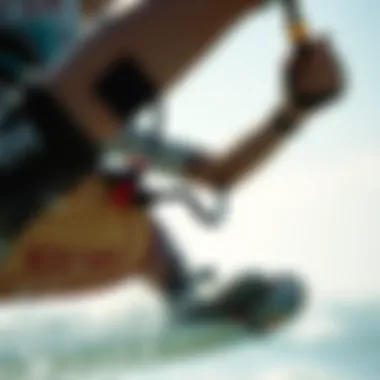
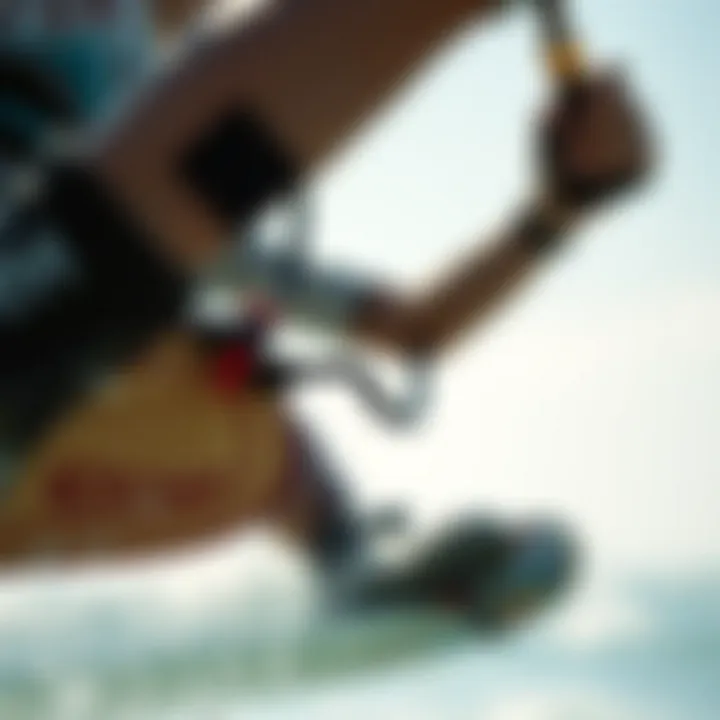
Intro
Kitesurfing, a thrilling water sport, combines elements of surfing, windsurfing, and paragliding. Yet, amid all the excitement, one component often gets kicked to the sidelines: the kitesurfing straps. While they may not be the flashiest part of the kitesurfing setup, they play a pivotal role in ensuring a rider’s performance and safety.
Whether you're soaring over waves or cutting through the water, having the right straps can make a world of difference. Straps come in various shapes, sizes, and materials, each crafted to suit different styles and preferences. For example, a beginner may prefer cushioned foot straps, while seasoned kitesurfers might opt for lighter options that allow for maximum maneuverability.
As we dive deeper into this guide, we'll explore these straps' intricate designs, innovations, and maintenance tips, ultimately aiming to empower kitesurfers with the knowledge needed to enhance their experience on the water. So, strap in (pun intended), as we take a closer look at this essential gear!
Gear and Equipment
Understanding Kitesurfing Straps
Before getting into the nitty-gritty, let’s set the stage. Kitesurfing straps are the interface between the rider and the board. Properly designed, they ensure secure footing, allowing for maximum control during rides. Straps can make or break a session, which is why understanding their material and design becomes paramount.
Material Choices
The materials used in kitesurfing straps range from rubberized blends to EVA foam, each providing different benefits:
- Neoprene: Often used for padding, it offers comfort and a snug fit.
- EVA Foam: Lightweight and durable, great for cushioning without bulking up.
- Rubber: Provides extra grip, essential especially for wet conditions.
Adaptation to Surfboard Technologies
Kitesurfing technology has evolved substantially, especially in surfboard production. With cutting-edge innovations, straps are being designed to align with the latest surfboard technologies. Options like snap-on systems are popular now, allowing for quicker adjustments on the go. Just imagine, no more fumbling with screws and bolts in the sand!
Essential Accessories for Every Surfer
While kitesurfing straps are essential, other accessories enhance the experience. Here are a few must-have items:
- Board Leashes: Keeping the board tied to the rider prevents it from drifting away during wipeouts.
- Harnesses: Work alongside straps by evenly distributing the kite's pull, avoiding strain on the hands.
- Safety Gear: Helmets and impact vests, for added security, are often advised. Riding without them is like going into battle without armor.
Innovations in Straps
The world of kitesurfing straps is constantly evolving. New designs often emerge, with some brands pioneering quick-adjust mechanisms that let surfers modify strap tension in seconds. Such innovations are designed with the user experience in mind, making setup easier and more intuitive.
"Choosing the right kitesurfing strap not only enhances your ride but can directly impact your safety and comfort on the water."
Finding the right fit can be a game changer, allowing riders to push their limits while feeling secure.
Maintenance Tips for Longevity
Taking care of kitesurfing straps isn’t rocket science, but a bit of care goes a long way. Here are a few tips:
- Rinse After Use: Saltwater can be harsh; rinsing straps with fresh water prolongs their life.
- Check for Wear and Tear: Regularly inspect straps for frays or damage. A small problem can escalate if neglected.
- Store Properly: Avoid leaving them exposed to direct sunlight for long periods to prevent material breakdown.
Prelude to Kitesurfing Straps
Kitesurfing, as a thrilling sport that combines elements of surfing, windsurfing, and paragliding, relies heavily on the interface between the rider and their equipment, particularly the straps. Without the right straps, controlling the kite, maneuvering on the board, and ensuring rider safety become a daunting task. This article will delve into kitesurfing straps, shedding light on their design, function, and the integral role they play in the overall kitesurfing experience.
What Are Kitesurfing Straps?
Kitesurfing straps serve as the direct link between the rider and their board, providing the necessary security and customization for each individual's riding style. These straps come in a variety of forms, each tailored to specific needs. At their core, kitesurfing straps consist of padded bands or loops that secure the feet onto the board. This connection allows riders to control their movement efficiently, applying pressure and adjusting their balance with ease. Given their critical role, it’s vital for kitesurfers to understand the different types of straps available and how they can impact performance.
Importance of Straps in Kitesurfing
Straps are not merely accessories; they are essential tools that can enhance a rider's performance significantly. Here’s why they matter:
- Stability and Control: Properly fitted straps help maintain a solid connection to the board, which is essential for stability, especially in choppy waters. Tightening or loosening them can let riders find their sweet spot between comfort and control.
- Adjustment for Conditions: A key advantage of kitesurfing straps is their adjustability. Depending on changing wind conditions or rider technique, straps can be modified to suit different styles and environments, ensuring optimal control and responsiveness.
- Safety Aspect: In the unfortunate scenario of wipeouts or falls, having securely attached straps can prevent the rider from being thrown off the board entirely, which might help reduce the risk of injury.
"Kitesurfing straps are to kitesurfing what laces are to shoes; without them, you’re bound to be in a tricky spot."
In essence, the choice of right straps can profoundly influence one’s riding experience. From comfort and performance enhancements to safety considerations, understanding the ins and outs of kitesurfing straps will aid riders in making informed decisions that ultimately enhance their time on the water.
Types of Kitesurfing Straps
Understanding the various types of kitesurfing straps is key to maximizing your experience on the water. Each strap serves a unique purpose, tailored to different needs of the rider. Choosing the right type can significantly influence performance, comfort, and safety, making it necessary to explore each kind thoroughly.
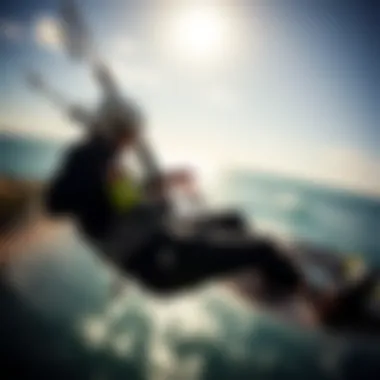
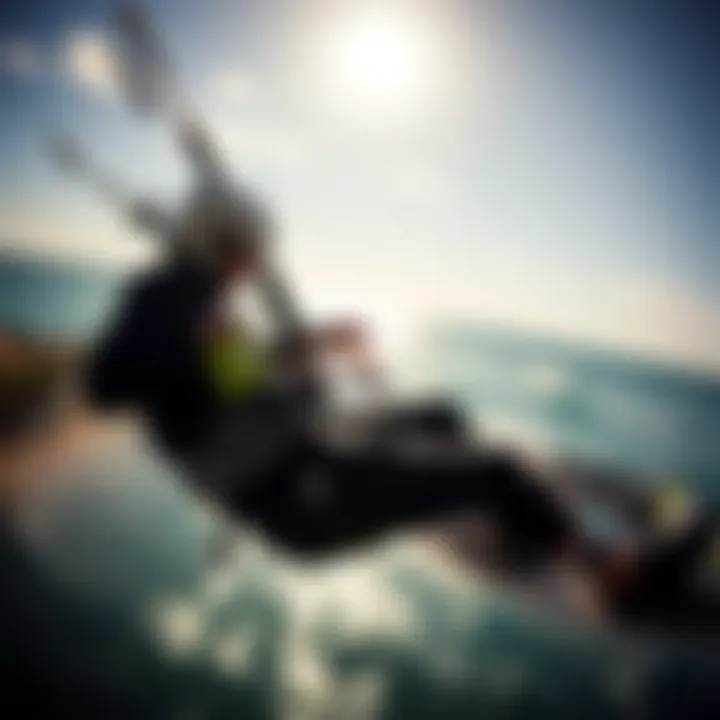
Foot Straps
Foot straps are perhaps the most recognizable type of kitesurfing strap. They connect the rider's feet to the board, enabling greater control during maneuvers and providing stability in challenging conditions. Foot straps can be adjustable or non-adjustable and come in several styles, catering to all levels from beginners to seasoned pros. A good fit is essential; straps that are too tight can cause discomfort while loose straps may lead to a lack of control.
When considering foot straps, one should look for:
- Padding quality: Comfortable padding can reduce strain on the feet.
- Adjustability: Ensure the straps can adapt not just to your foot size, but also to different riding conditions.
- Materials: Strong and lightweight materials enhance durability and performance while riding.
In many ways, foot straps are the unsung heroes of kitesurfing, often overlooked until the rider feels the discomfort of improperly fitting ones. A true testament to foot strap effectiveness is seen when riders navigate rough waters with confidence, a feat that becomes borderline impossible without proper straps.
Kite Straps
Kite straps, on the other hand, serve a different yet equally essential function. These straps are primarily used in the setup of the kite and attach the kite's leading edge to the lines. They're pivotal in keeping the kite secured and positioned correctly when launching or landing.
The benefits of high-quality kite straps include:
- Enhanced safety: They ensure the kite doesn’t detach during crucial moments.
- Durability: Kite straps must withstand harsh weather, ocean spray, and the rigors of movement, so select brands known for their strong materials.
- Easy handling: A good design allows easy attachment and removal, saving time when setting up.
Using kite straps properly gets you ready for a smooth takeoff and landing, which is critical in avoiding accidents or injuries. Your day on the water can go smoothly if your kite is well-strapped!
Handle Straps
Handle straps are often a more obscure element in kitesurfing gear, particularly for less experienced riders. They provide a vital connection between the rider and the kite leash or safety systems, acting as a lifeline in an emergency. The importance of handle straps grows as the intensity of the kitesurfing experience increases.
Key considerations when selecting handle straps include:
- Grip texture: A well-designed grip helps riders maintain control, even when splashed by waves or during intense speed.
- Length and adjustability: Some riders prefer longer handles, while others like shorter ones, which can affect maneuverability and comfort.
- Safety features: Many modern handles come with integrated safety releases, allowing quick disconnects in emergencies.
Handle straps may not grab the spotlight, but they are crucial when push comes to shove. During giant leaps or rapid descents, they can make the difference between a thrilling ride and a risky situation.
Understanding the distinct types of kitesurfing straps leads to more informed choices. Riders who take the time to find the right foot, kite, and handle straps to suit their individual style and requirements ultimately enjoy a safer, more exhilarating kitesurfing experience.
Materials Used in Kitesurfing Straps
When it comes to kitesurfing, the materials used in straps can significantly impact both comfort and performance. Straps are not just a minor component; they serve as the direct connection between the rider and the board. Understanding the materials can aid in selecting the right straps that enhance your overall kitesurfing experience. From durability to comfort, the choices can make or break a session on the water.
Neoprene and Its Benefits
Neoprene is a go-to material for many kitesurfing straps for good reason. This synthetic rubber is not only flexible but also provides a substantial amount of cushioning. When you’re jumping waves or carving through the surf, you want something between your feet and the board that’s forgiving and supportive. Neoprene does just that.
- Water Resistance: Unlike many materials, neoprene holds up well against water exposure. This means it won’t degrade as quickly in saltwater or freshwater conditions.
- Comfortable Fit: Thanks to its stretchy nature, neoprene conforms to your feet, offering a snug fit without being too tight. Riders often remark on how it feels like a second skin.
- Shock Absorption: The material’s ability to absorb impact helps reduce the strain on the feet, especially for those more intense tricks or landings.
Synthetic Fabrics and Durability
Synthetic fabrics such as polyester and nylon have carved out a space in kitesurfing straps as well. These fabrics are known for their extraordinary strength and resistance to wear. While neoprene offers comfort, synthetic fabrics excel in long-term durability and maintenance. With UV resistance built-in, they stand up to the sun’s harsh rays, reducing the fading and damage that might occur over time.
Here are some of the key highlights of synthetic fabrics in kitesurfing straps:
- Lightweight: Riders appreciate that these materials don’t add unnecessary bulk.
- Quick Drying: After spending time in water, synthetic straps dry quickly, keeping the gear lightweight and less prone to mold.
- Cost-Effective: Generally, synthetic options may offer a more budget-friendly route while ensuring longevity.
Innovative Materials in Modern Design
The kitesurfing world is always evolving, and with that comes innovative materials designed specifically for performance enhancement. Brands are increasingly experimenting with combinations of different elements to create straps that go beyond merely functional.
- Carbon Fiber Reinforcements: Some high-end straps now incorporate carbon fiber to provide additional support without sacrificing weight. This gives riders an edge in responsiveness, especially during dynamic maneuvers.
- Advanced Foam Inserts: New foams are being engineered to offer customized support and shock-absorbing capabilities tailored for various riding styles. These are designed to reduce fatigue and improve overall comfort during extended sessions on the water.
- Recycled Materials: As sustainability becomes paramount, many brands are now producing straps from recycled materials, merging performance with environmental responsibility.
"Choosing the right material can significantly improve your kitesurfing experience, turning a good outing into a great one."
Overall, the materials used in kitesurfing straps play a pivotal role in the kitesurfing experience, influencing everything from comfort to performance. Understanding these options can lead to more enjoyable rides and better control on the water.
Choosing the Right Kitesurfing Straps
Selecting the right kitesurfing straps can make or break the overall experience on the water. Straps serve as the link between you and the board; quality and comfort in your gear are vital for performance and safety. When you're tearing through waves or launching into the sky, the straps should provide a snug fit that doesn't hold you back or distract you from the ride. This section focuses on key factors that one should consider to choose the right kitesurfing straps.
Assessing Your Skill Level
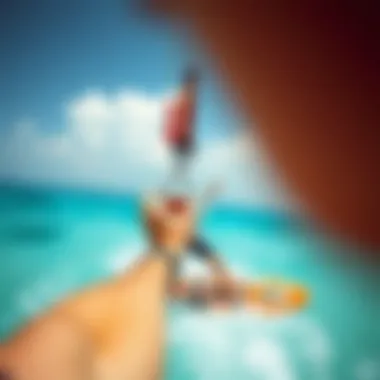

Understanding your own skill level is paramount in deciding what type of straps to use. Beginners typically benefit from more forgiving straps that allow for easier bonding with the board, while seasoned surfers might prefer tighter, more responsive models. Here are some points to help assess your skill level:
- Beginners: Look for straps that offer a softer fit and cushioning. Soft padding can provide more comfort and less pressure on your feet during falls.
- Intermediate Riders: At this stage, you may want a mix of comfort and performance. Straps with adjustable features can help you find that balance.
- Advanced Surfers: Experienced riders should opt for straps that offer direct feedback and responsiveness, allowing for a more dynamic ride.
Think of your skill level not just as a label; it’s a path to improvement. As one progresses, the equipment should evolve as well. This is where testing various straps comes into play.
Types of Riding Styles
Your riding style plays a crucial role in the type of straps that will work for you. Consider how you want to ride - whether it's freestyle, wave riding, or simply cruising. Each style has its own demands. A few points to keep in mind:
- Freestyle: Look for straps with a wider platform to give you ample space for your feet while performing tricks. They should also allow for easy entry and exit to enable quick maneuvering.
- Wave Riding: Straps need to hold your feet securely during sudden movements and hard landings. You might want a tighter, more responsive fit to help maintain control.
- Cruising: Comfort is key here. Straps that are soft and padded can improve enjoyment during long sessions.
Identifying your preferred style can drastically streamline your selection process. Each rider has a nuanced preference; don’t hesitate to try different setups.
Fit and Adjustability
Fit is everything when it comes to kitesurfing straps. A poor fit can not only hamper performance but can also lead to discomfort or even injury. Adjustability allows for customization, which is especially important as feet swell a bit after hours on the water. Here’s what to consider:
- Sizing: Ensure the straps fit snugly but not overly tight. They should keep you in control without pinching.
- Adjustment Mechanisms: Look for straps that come with easy-to-use buckles or Velcro that can be adjusted on the go.
- Foot Shape Compatibility: Everyone’s feet are different. Some straps are designed for specific foot shapes—make sure you find ones that match yours.
Kitesurfing Strap Innovations
In the realm of kitesurfing, strap innovations play a pivotal role in optimizing performance and enhancing the overall riding experience. As equipment develops, so do the demands of kitesurfers looking for improved functionality, comfort, and safety. Strap innovations encompass everything from material advancements to design tweaks that address the diverse needs of riders. These innovations not only influence the feel of the board but can significantly impact performance dynamics during various maneuvers.
Advancements in Design
The recent advancements in strap design are nothing short of impressive. Manufacturers have begun to invest in ergonomics, creating straps that contour to the natural shape of the foot. This shift is crucial because a better fit translates into increased comfort and control. When a rider’s foot is snugly secured, they are better able to maintain balance, especially during high-speed runs and challenging tricks.
Moreover, the design of kitesurfing straps has reached new heights, with velcro systems now featuring quick-release mechanisms. This allows for seamless transitions between different riding styles and conditions. For instance, a beginner can easily adjust their setup without the need for a complete redesign. For advanced kitesurfers, these adjustments can mean the difference between landing a trick perfectly or face-planting into the water.
- Soft gel padding: Provides cushioning for long sessions.
- 3D contoured designs: Adapt better to the shape of feet.
- Lightweight materials: Reduce overall gear weight, enhancing mobility.
These design enhancements reflect a growing awareness in the kitesurfing community about the importance of comfort and performance alignment.
Integrated Safety Features
Safety is paramount in any sport, and kitesurfing is no exception. Integrated safety features within kitesurfing straps have become a focal point for brands looking to elevate rider protection without compromising on performance. These features often include quick-release systems that not only facilitate easy removal but also provide instant detachment from the board during emergency situations. This is crucial during wipeouts or sudden shifts in wind that could lead to dangerous scenarios.
Additionally, many modern straps now come equipped with breakaway buckles and reinforced stitching that minimize the risk of failure under stress. This meticulous attention to detail ensures that riders can focus on their performance without constant worry over their equipment.
"Innovative straps are designed not just to enhance performance but to ensure rider safety, allowing for a worry-free kitesurfing experience."
To sum it up, the innovations in kitesurfing straps reflect a commitment to improving both performance and safety for riders. By embracing advancements in design and integrating critical safety features, the kitesurfing community is ensuring that riders can push their limits while feeling secure in their gear.
The Role of Straps in Kitesurfing Performance
Kitesurfing relies heavily on the equipment used, and at the heart of it all are the kitesurfing straps. These pieces might seem trivial at first glance, but they play pivotal roles in how a rider interacts with the board and kite. Understanding their importance can fine-tune not just performance but also enhance safety and comfort.
Impact on Stability and Control
Stability in kitesurfing is essential, especially when you're cutting through choppy waters or gusty winds. The right straps provide a solid connection to the board, allowing kitesurfers to maintain balance while maneuvering. When the straps fit correctly, they ensure that your feet don’t slip or move unnecessarily. This stability translates into better control over the kite's pull, letting the rider respond more deftly to changes in wind or water conditions.
In technical terms, an improperly fitted strap can cause a destabilizing shift in weight distribution. If one foot is loose while the other is snug, it can throw off the rider’s center of gravity, leading to unplanned crashes. Think of it like trying to balance a seesaw; if one side is too heavy, it tips over. Quality straps are designed to accommodate various foot sizes and offer adjustability, enabling riders to customize their setup to achieve optimum stability.
Influencing Jump Dynamics
Jumping is a thrilling part of kitesurfing; every rider aims for those high-flying leaps into the air. Here, the straps again play a crucial role. They allow riders to load up tension in the board before launching into a jump. When riders pull on the kite and simultaneously push against the board with their feet, the tension in the straps helps in converting that stored energy into upward lift.
The design and flexibility of the straps can either enhance or inhibit the dynamics of the jump. Straps that are too rigid might restrict movement and reduce lift, while those that are too loose can cause a lack of connection, often leading to a fall. Riders must find a balance when selecting their kits; experimenting with strap types, widths, and materials helps find the sweet spot that resonates well with their riding style.
Straps and Rider Fatigue
Fatigue is an often overlooked aspect in kitesurfing. Riding for extended periods takes its toll, not just on the arms and legs but also on the feet. Inadequate straps can lead to foot cramps and discomfort, quickly turning an enjoyable session into a painful one. Quality straps should distribute force evenly across the foot, preventing undue pressure in specific areas.
In addition to comfort, the right straps can also impact how much energy is expended during a ride. If a rider has to constantly adjust their footing, it can lead to faster fatigue. A well-designed strap allows for natural movement while providing secure support, minimizing the mental and physical energy used. For instance, neoprene foot straps that mold to the contours of the foot can significantly reduce pressure points, enhancing overall comfort and allowing for longer sessions on the water.
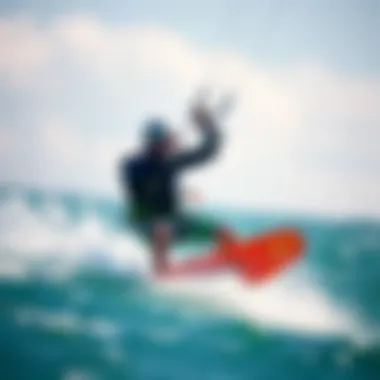
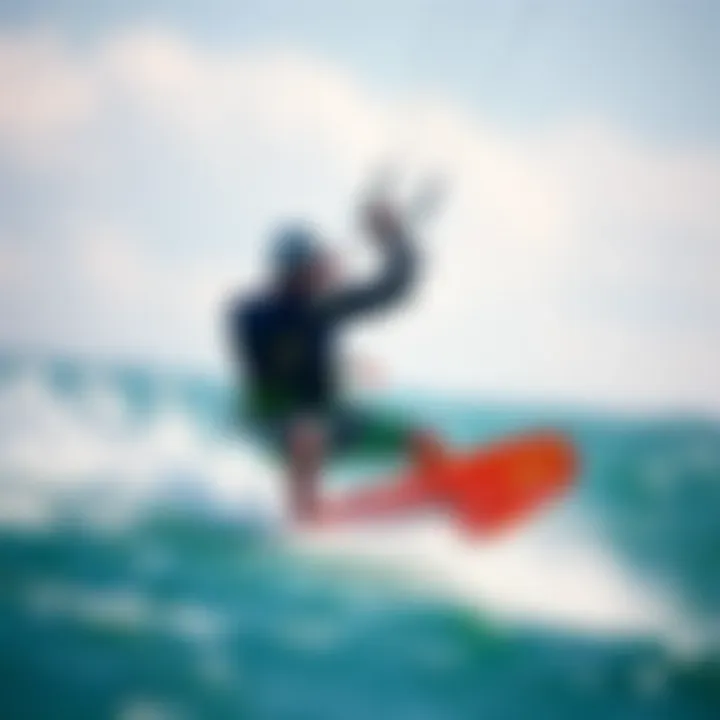
"The right kitesurfing strap is not just gear; it’s your invisible partner on the water, aiding stability, jump dynamics, and reducing fatigue."
Maintenance of Kitesurfing Straps
When it comes to kitesurfing, the thrill of gliding above water and catching air is what most enthusiasts chase. However, nothing dampens that excitement quite like equipment failure, and kitesurfing straps, while seemingly minor, can significantly impact your experience on the water. Maintenance of kitesurfing straps is crucial for longevity, safety, and overall performance. Just like you wouldn’t drive a car with worn tires, neglecting your straps could lead to hazardous situations. This section will guide you through the best practices for caring for your straps, recognizing when they need attention, and understanding when it’s time to bid farewell.
Cleaning and Care Tips
Keeping your kitesurfing straps in tip-top shape starts with a simple routine. Here are some effective cleaning tips to ensure your straps stay fresh and functional:
- Rinse After Use: The ocean’s salt can be brutal. After a session, rinse your straps with fresh water to remove salt, sand, and debris.
- Gentle Soap: Occasionally, a mild soap can help. Use a soft cloth or sponge with lukewarm water and a drop of dish soap. Avoid harsh chemicals—they might wear down the material.
- Air Dry: Let the straps air dry completely. Avoid using direct heat sources, as excessive heat can deform the materials. Just hang 'em somewhere shaded.
"A stitch in time saves nine." Taking care of your gear not just improves performance but can save you money in the long run.
Identifying Wear and Tear
Straps endure a lot during every session. It's essential to regularly check them for signs of wear. Here’s what to look out for:
- Cracks and Tears: Inspect for cuts or fraying. Minor tears can often be repaired, but extensive damage might call for replacement.
- Discoloration: Fading colors can indicate weakened materials. This may not always lead to immediate failure, but it’s a sign for caution.
- Loose Stitching: Check for any loose threads. While sometimes it can be fixed, frequent issues often signal it's time for new straps.
When to Replace Straps
Even with the best care, nothing lasts forever. Knowing when to replace your kitesurfing straps is vital for maintaining safety and performance:
- Frequent Failures: If you find yourself continuously fixing the same strap, it’s likely time to invest in a new set.
- Age Matters: Straps can degrade over time, even without visible damage. If your straps are several seasons old, consider getting new ones before your next big session.
- Performance Issues: If you feel unstable or your straps no longer provide the support they used to, that’s a red flag. Don’t take chances—replace them!
Maintaining your kitesurfing straps is not just about prolonging their life; it’s about ensuring you're equipped for a safe thrill on the water. Regular care and attention to detail can prevent unfortunate mishaps, allowing you to focus on the ride ahead.
Customizing Your Kitesurfing Straps
Customizing your kitesurfing straps is more than just about aesthetics; it’s a paramount aspect that ties into comfort, functionality, and performance on the water. The right strap can either make or break your ride, and when comfort is at stake, personalized adjustments can be invaluable. Kitesurfing, by nature, demands a high level of control and balance, and poorly fitted straps could lead to discomfort or even fatigue, undermining the whole experience. Tailoring your straps not only ensures a snug fit but also allows you to focus on the ride without constant distractions such as slippage or pinching. It's not just a matter of personalizing; it's about elevating the quality of your time spent on the waves.
Personalized Fit for Optimal Comfort
Finding the right fit is crucial when it comes to kitesurfing straps. A snug but comfortable fit provides stability that enhances your control during maneuvers. When selecting your straps, consider your foot shape and size, as kitesurfing requires a lot of movements that can lead to varying pressure points. Customizing the fit can involve adjustments in the strap length, width, or even the padding thickness. Straps that mold well to your foot can greatly reduce fatigue during prolonged sessions and also help with injury prevention.
Here are some key elements to consider:
- Adjustability: Look for straps that offer multiple points of adjustment. This allows for minor tweaks that can significantly impact your comfort level.
- Padding: Different thicknesses can affect how the strap feels around your foot. A well-padded strap can disperse pressure evenly, reducing hot spots that lead to discomfort.
- Foot Shape Accommodations: Some straps are designed specifically for different foot shapes, offering a tailored feel right out of the box.
In essence, achieving a personalized fit means you spend less time worrying about gear and more time enjoying the ride. It’s an investment into a more enjoyable experience on the water, where you truly harness the wind beneath your kite.
Options for Custom Design
When it comes to the aesthetics and performance of kitesurfing straps, customization extends beyond fit. A variety of options are available that allow riders to express their personality while also meeting specific performance needs. An array of colors, patterns, and designs can align with your individual style or the overall look of your kiting gear.
Additionally, consider these aspects:
- Material Choices: Beyond traditional neoprene, consider lighter, more elastic materials that can match the kitesurfing environment.
- Color Customization: Many brands offer the ability to mix and match colors, allowing for a unique look.
- Brand Logos and Personalization: Some manufacturers allow for personal logos or names to be added, making your gear stand out in a crowd.
By opting for custom designs, you not only make a fashion statement but also ensure that your kitesurfing straps carry personal significance and style. When you take the time to customize, you transform the straps from mere equipment into an integral part of your kitesurfing identity.
"Customizing your kitesurfing straps isn’t just about looks; it’s about making the most of every session on the water."
Epilogue and Future Prospects
As we wrap up our exploration of kitesurfing straps, it’s crucial to reflect on their significance in the overall kitesurfing experience. Straps are not just accessories; they serve as the vital link between the rider and the board, ensuring both performance and safety. With advancements in technology and materials, the future of kitesurfing straps appears promising, with several key aspects emerging that merit discussion.
Summary of Key Insights
Throughout this article, we’ve covered several pivotal points regarding kitesurfing straps:
- Types: Diverse strap types, such as foot straps, handle straps, and kite straps, highlight various functionalities—giving riders options that fit their unique riding styles.
- Materials: The materials discussed, including neoprene and synthetic fabrics, play a crucial role in durability, comfort, and performance, making them essential considerations for any kitesurfer.
- Customization: Emphasizing the importance of personalized fits, we explored ways riders can tailor their straps to enhance their comfort, thereby improving their overall experience.
- Maintenance: Regular upkeep is vital to prolonging the lifespan of straps and maintaining safety. Understanding wear and tear is a skill all kitesurfers should develop.
In essence, making informed decisions about kitesurfing straps can greatly enhance the experience of both novice and seasoned riders alike. It’s about finding what suits your style while ensuring safety and comfort on the water.
The Future of Kitesurfing Strap Technology
Looking ahead, the technological progression of kitesurfing straps is likely to focus on innovative designs that enhance performance while prioritizing rider safety. Expect to see:
- Smart Features: With the rise of wearable technology, we might witness straps embedded with sensors to monitor performance metrics, providing real-time feedback to riders.
- Advanced Materials: Innovations in materials could lead to lighter and more resilient straps, giving surfers advantages in agility and hydrodynamics.
- Eco-Friendly Options: As sustainability becomes a greater concern, manufacturers may look into eco-conscious materials that do not sacrifice performance but rather contribute to a greener approach to kitesurfing.
- Customization Software: Future developments may include online platforms or apps that enable users to design and customize straps to their specific requirements in a more user-friendly interface.







